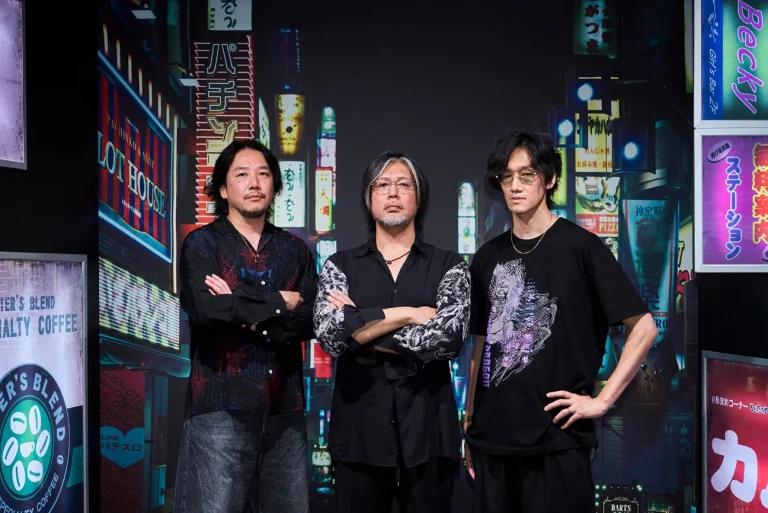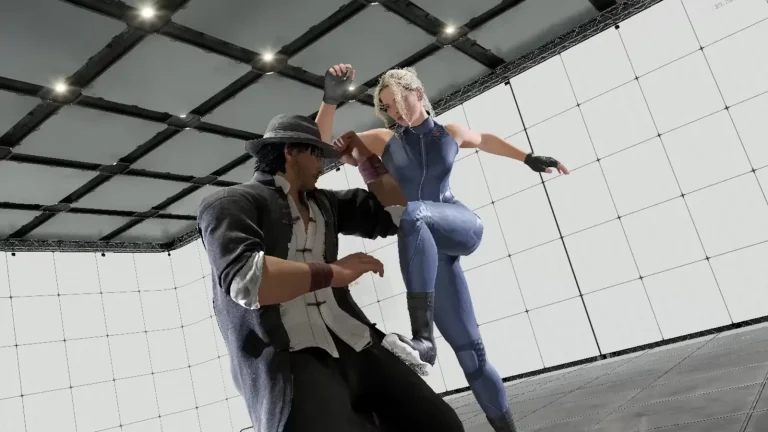Like a Dragon: Infinite Wealth, the latest entry to Sega’s Like a Dragon series, sold over one million units worldwide within a week of its release, breaking the franchise’s past records. But the grander the scale of a title, the easier it is for the individual efforts behind it to go unnoticed. That’s why we collaborated with SEGA to interview members of each section of RGG Studio and find out all there is to know about their meticulous work on the Like a Dragon franchise.
In this edition, we speak to lead designer Michihiko Hatoyama and art director Nobuaki Mitake about the Like a Dragon series’ background design. Part One of this interview focuses on how the team cleverly reuses assets from previous titles.
Studying all the lights in Kabukicho to create the perfect lighting
―― To start things off, please introduce yourselves, including your background and what kind of work you do at RGG Studio.
Michihiko Hatoyama(Hatoyama hereafter):
Since joining Sega, I have been doing background design for 22 years. I’ve been involved with the Like a Dragon series since its inception, and including Infinite Wealth, I’ve been involved in 11 titles. For five of them, I was the background leader. I originally studied oil painting at Musashino Art University. While I was a student, I saw an article in a game magazine about an art college graduate working at Sega. This piqued my interest, and I ultimately decided to join Sega.

――You majored in oil painting? Designing backgrounds must be fun for you then.
Hatoyama:
It is fun! I could go on creating hostess clubs all day (laughs). Since I was oriented toward photorealistic painting, I had good chemistry with the Like a Dragon series, and I consider myself lucky for having been able to participate in the project (laughs). I am also grateful to the company.
――So, it’s your dream job.
Hatoyama:
Yes, after all, it’s fun to work on something that is in line with your own intentions. Also, while some people prefer to create a variety of works, I am the type of person who can keep working on one thing, so I feel that we were a good match in this respect as well.
――Could you introduce yourself as well (to Mitake)?
Nobuaki Mitake (Mitake hereafter):
My name is Mitake, and I am the art director for the Like a Dragon series. I was the background leader until Yakuza 3, and Hatoyama was a member of the background staff at that time. After that, I became the art director and was put in charge of the overall design, so Hatoyama took over as the background leader.
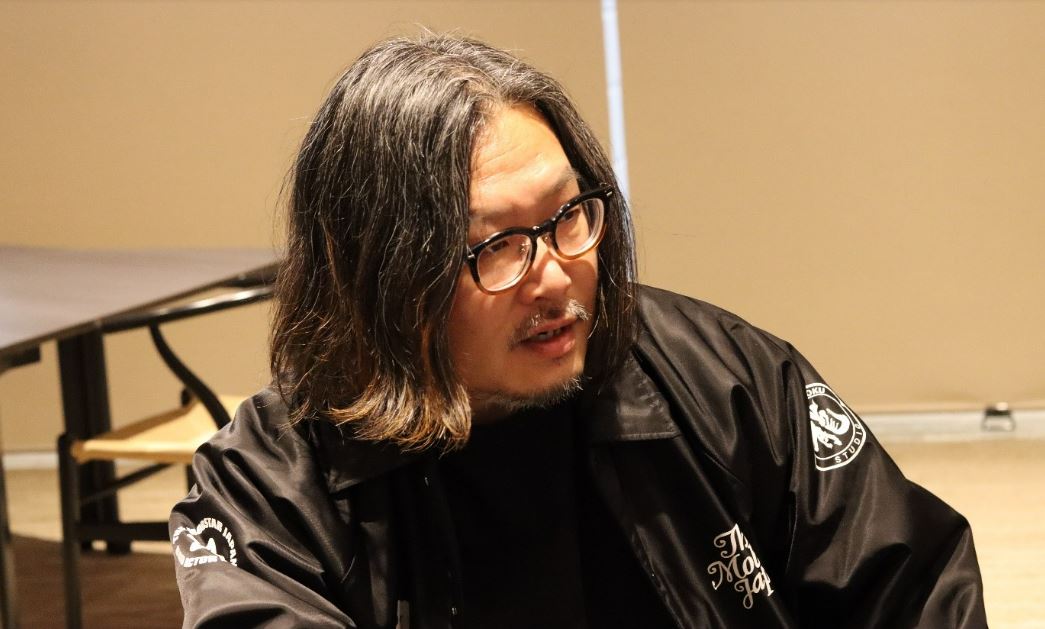
――What is your impression of Hatoyama’s work and personality?
Mitake:
He is a very diligent person. You can tell from his earlier comment about designing hostess clubs, but he is committed to pursuing the ideal image he sees in his mind, and he is extremely precise in creating photorealistic backgrounds.
Hatoyama:
Thank you! I was moved to hear you say that, especially since you’re my superior (laughs).
――(laughs) Moving onto the game itself, Like a Dragon: Infinite Wealth has surpassed 1 million copies sold in a record-breaking time. How does the background team feel about this?
Hatoyama:
I am frankly very happy. We weren’t sure exactly what to expect as it was the first game to be set outside Japan, so I am glad that it’s being received positively. I appreciate every comment, but especially the comments about the density and atmosphere of the backgrounds, as this what I’m particular about. These comments are what keeps me motivated to work on games.
――Thank you very much. First of all, I would like to ask you about the evolution of the Like a Dragon series’ backgrounds. For example, if we look at Sotenbori in Like a Dragon Gaiden: The Man Who Erased His Name and Kamurocho in Infinite Wealth, these locations first appeared long ago, but have kept evolving over time.
Hatoyama:
As new stories often take place in the same locations as past titles, The Like a Dragon series is based on the use of legacy materials (past assets). Sometimes we make modifications to the locations based on how the story unfolds, but we start by adjusting the lighting and colors to match the atmosphere of the game.
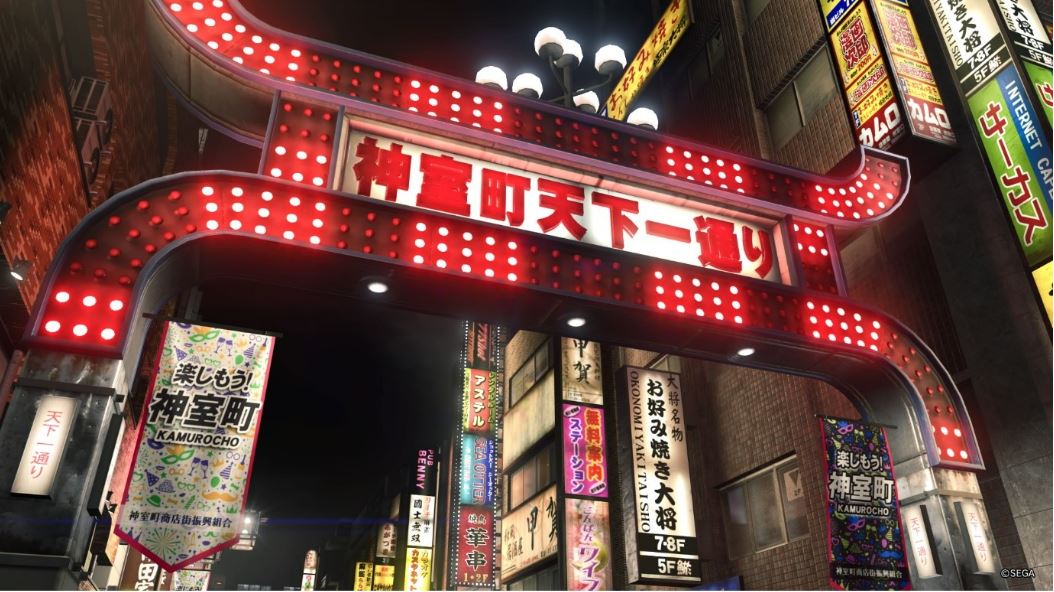
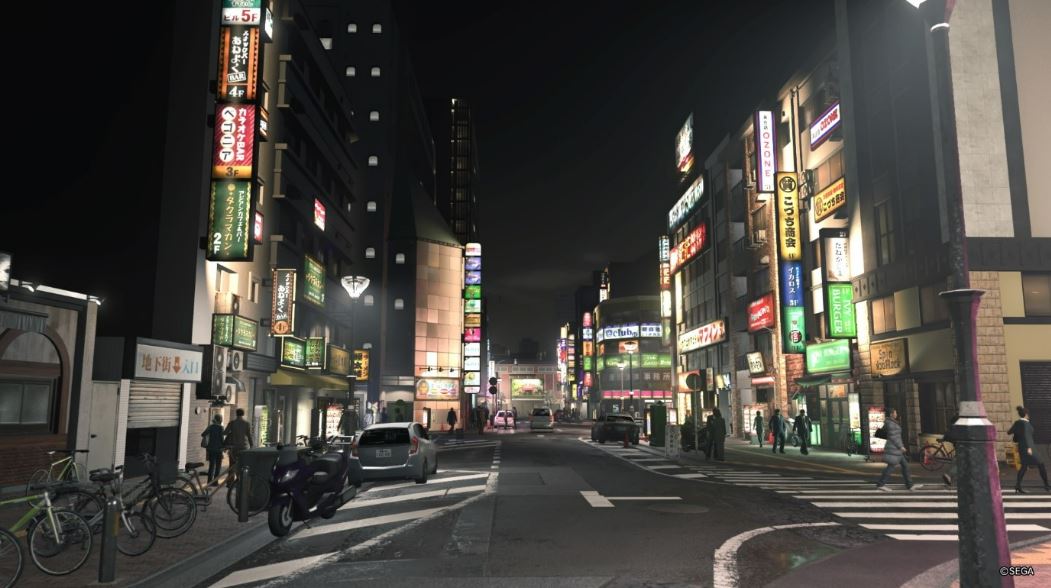
――The lighting changes the way the city looks a lot, doesn’t it? That makes sense. So, the Like a Dragon series’ remarkable graphic evolution in recent years does not come from remaking past assets.
Mitake:
Yes, we adjust them, but we don’t remake them. One big turning point in this context was when we switched to the Dragon Engine for Yakuza 6: The Song of Life. Many things evolved with that change. For example, we added animation to the street signs and made the electric decorations more realistic.
Hatoyama:
Since Yakuza 6, the anti-aliasing (a technique that reduces the jaggedness of digital images) program has been improved, and the screen jitter has been reduced considerably, so you can tell at a glance that the quality has improved a lot.
――So, the changes in appearance were largely due to the Dragon Engine?
Hatoyama:
We are working on improving quality in various ways even now. For example, contrast is increased or decreased depending on the game. Also, it’s not easy to tell, but we achieved a higher number of characters outside of the background in Like a Dragon: Infinite Wealth by using instancing (a method of virtually cloning a 3D model, rather than fully duplicating it) to save memory and processing power, which has made scenes look richer.
One of the more obvious changes we made in Infinite Wealth was adding evening time to Isezaki Ijincho in Yokohama. While Yakuza: Like a Dragon had daytime and nighttime, there was no evening.
――Now that you mention it yes, there was no evening in Ijincho.
Mitake:
Since it is used in cutscenes too, we put a lot of effort into the lighting and other aspects to make the sunset and sky look eye-catching. We hope players will notice these things too!
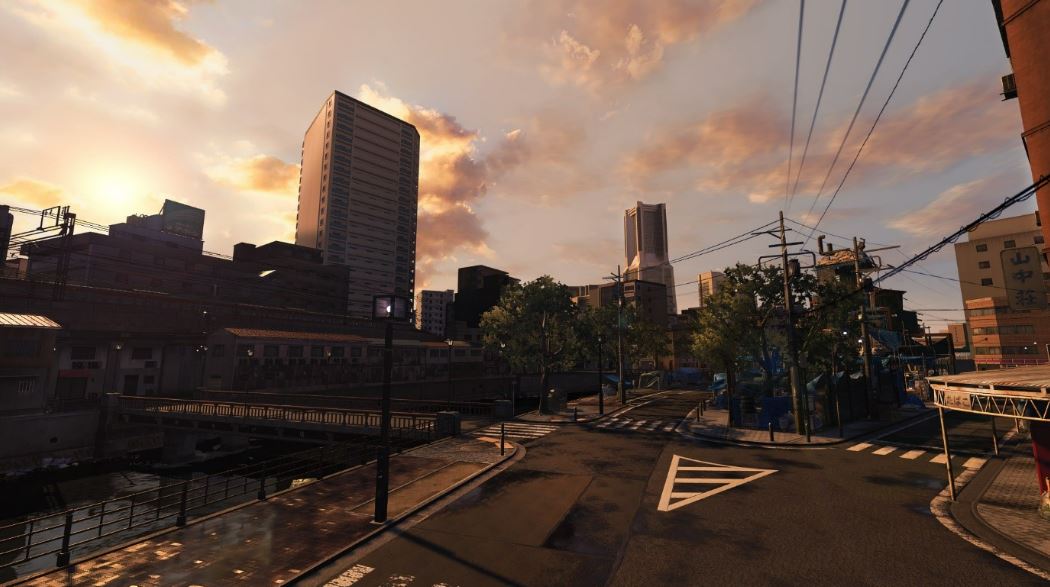
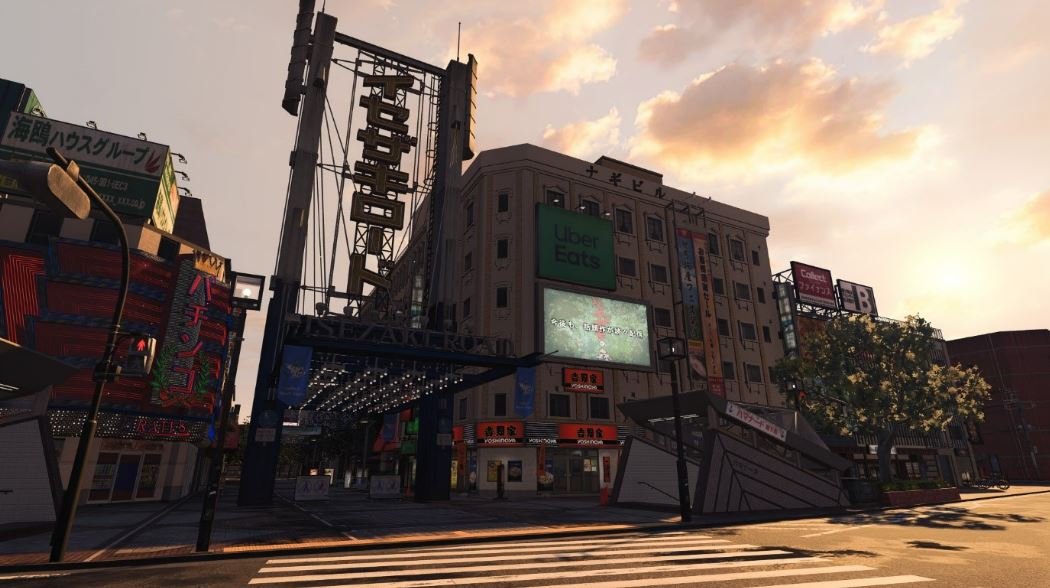
――By the way, how much has the background team visited locations in Kabukicho and Yokohama, which the game environments are based on? Do you perhaps… go there on a regular basis to enjoy the nightlife?
Hatoyama:
We don’t go that far (laughs). However, I have gone under all the street lights to measure the amount of lux and make a luminance map of that part of town, so I am quite familiar with it.
――Under all the lights?! Wow, I guess realistic lighting is really that important.
Hatoyama:
It is very important, which is why I’m often put in charge of lighting as the final step in the background production process.
――No matter the quality of your model or background…
Hatoyama:
It’s all ruined if you have bad lighting! Because of that, I am very particular about it.
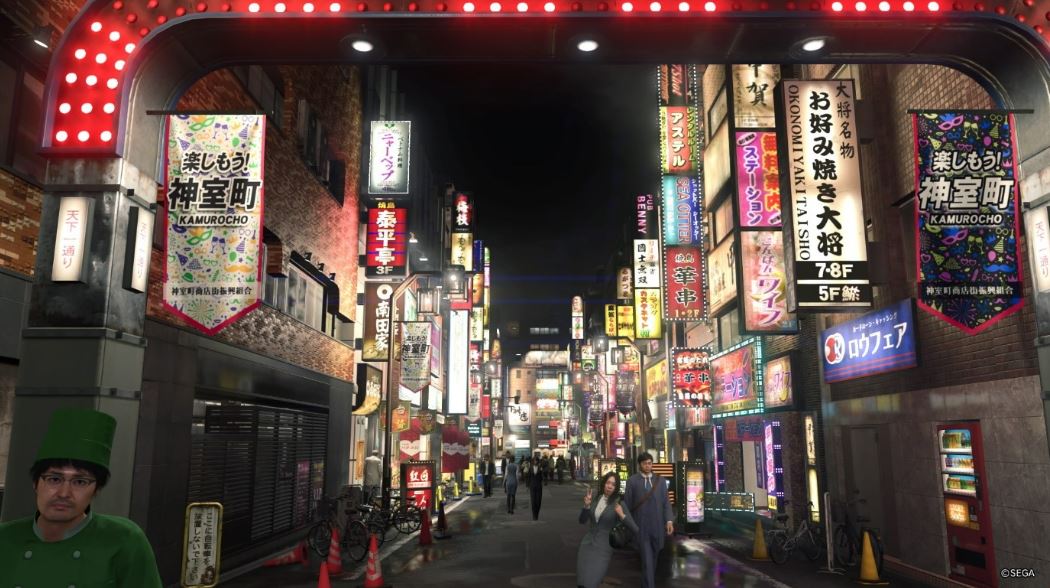
Like a Dragon’s movie billboards changed to match the era of each game
――Thank you. Other than adjustments to past assets, do you also re-model objects anew?
Hatoyama:
We do. If the background looks the same every time, players will get bored, so we often re-model things to match the time and setting. For example, it would be strange if time moved forward in the game, but the movie billboards stayed the same.
――Are the movie billboards always changing? Now that you mention it…
Mitake:
I mean, in the real world, there are no movies with theatrical runs that last multiple years, so… (laughs) We change them for each game.
――I feel like the movies on the billboards, including their titles, always strike the perfect balance between something that may or may not actually exist.
Hatoyama:
Yes, the movies are all fictional, but we sometimes receive comments from people who would like to actually watch them (laughs). When creating the billboards, we check with the character designers to see if they have created any characters or animals somewhere that could be reused as models for the signs.
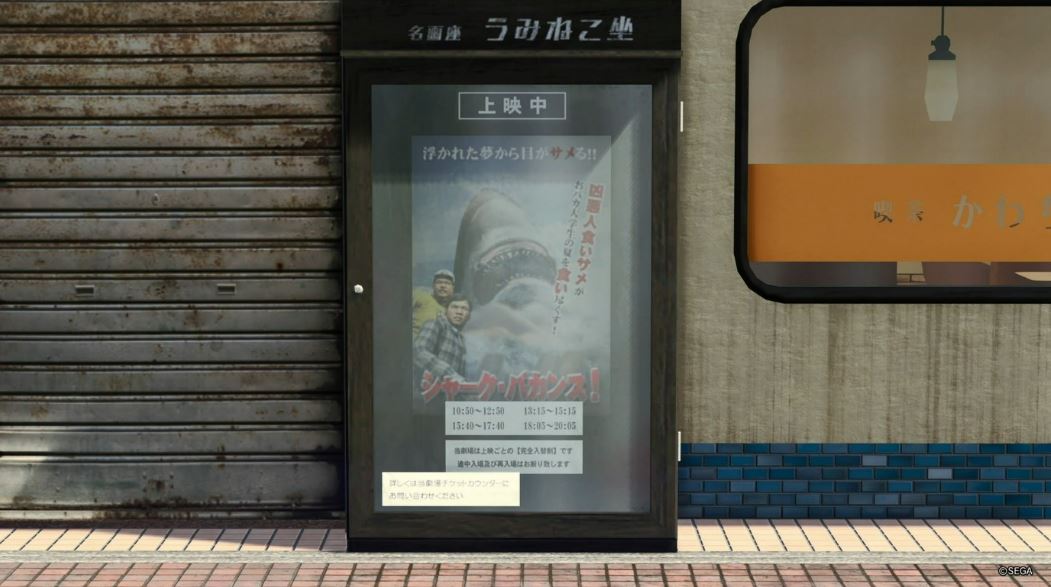
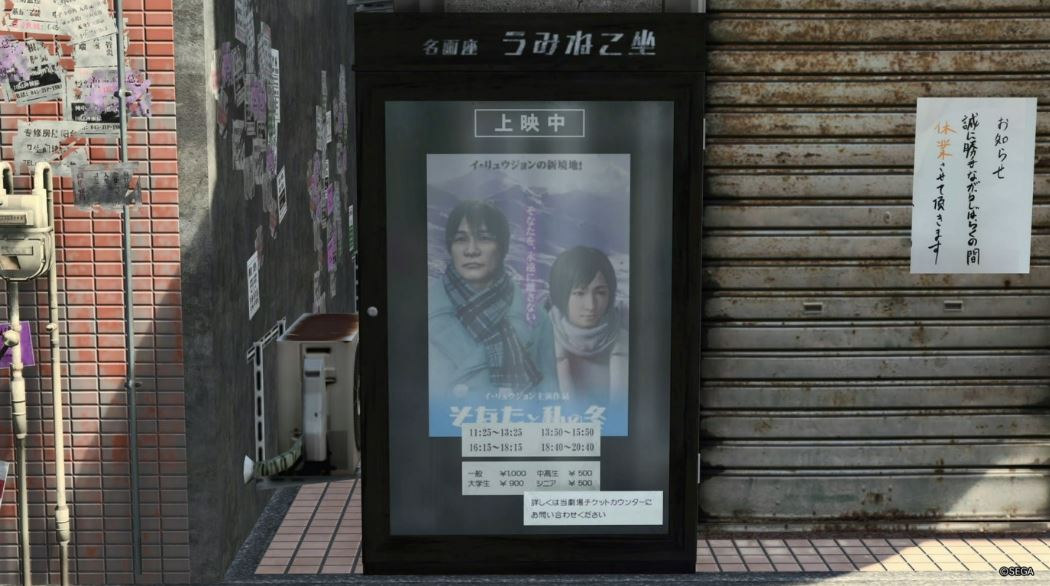
――Do you also change the information on other signs with each game?
Hatoyama:
We do change them in cases when what’s shown is out of step with trends or otherwise outdated. For example, we adjust the displayed consumption tax rate as it changes in real life or change the scheduled completion date at construction sites to reflect the change from the Heisei era to the Reiwa era, and so on, to make sure that every detail is in line with the times.
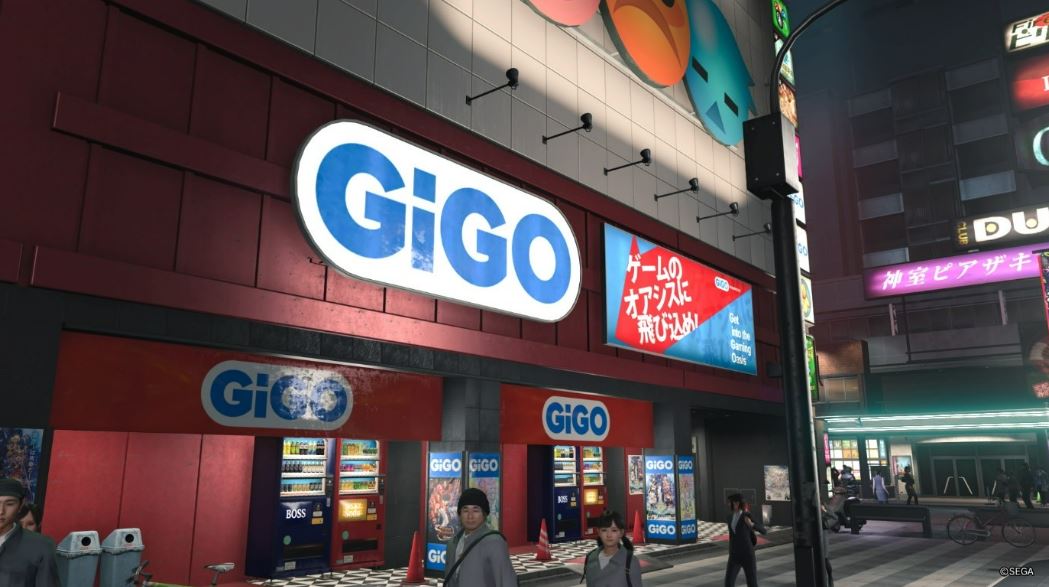
Changes in-game reflect the passage of time in the real-world
――Redesigning the signs must take up a lot of time.
Mitake:
Indeed (laughs). The map leader does their best to oversee the changes.
Hatoyama:
In fact, the signs are the most labor-intensive element when making buildings.
Mitake:
To give a specific example, when the first entry in the series was in development, there were many DVD and cell phone signboards, but they disappeared in later games because they are rarely seen now. In Infinite Wealth, we have included advertisements for hybrid work companies and subscriptions, in keeping with the times. Since I originally studied advertising-related graphic design, I can be particular about things, so I often make comments like: “I’ve never seen someone use the Mincho font for an ad!” (laughs)


――Is there anything you want the players to pay attention to in particular (to Mitake)?
Mitake:
Well, I am in the position of art director now, but I am also in charge of the Diamond Vision displays in each title. I always try to make these reflect the current times, and there are even slight differences between the footage displayed in Kamurocho and Yokohama, so please check them out!
――So, you are the “signboard police” of RGG studio (laughs).
Mitake:
(laughs)
Hatoyama:
Buildings and advertisements for which we have corporate tie-ins are usually not a problem because we create them based on the real thing, but for original signboards, we often exchange critique among ourselves. We make sure to explain the philosophy of signs, such as their composition and look, including phone numbers, addresses, and product information, and instruct all team members on how to design them. A variety of aptitudes are essential for the creation of game backgrounds, including the ability to reproduce something realistically and the ability to design graffiti.
Mitake:
The specific places the player stops at throughout the story are requested by the planning team, but it’s the background team that comes up with the names and text for the other stores in the streets. We design the streets based on all kinds of suggestions.
――Yeah, you can’t keep asking the planning team what to do for each store name and design, I guess. Speaking of which, do you try to make the signs uniform?
Hatoyama:
We don’t. If we made them all in the style of one designer, we would end up with too many similar signboards. With actual towns, you never have the same designer work on all of the signs, so by combining the individual styles of each staff member, we aim for a more chaotic impression. This gives the town a more realistic feel.

――You’ve talked about updating the games’ environments to match the times, but did you experience an opposite kind of difficulty with Yakuza 0, with it being set in the 80’s “bubble economy” era?
Hatoyama:
Yeah, because you can’t time travel to gather information even if you wanted to (laughs). I went through materials from 1988 and imagined what the streets of the time looked like based on only a few photos.
――You had to somehow make the design reminiscent of the era.
Hatoyama:
On the other hand, since there was no need to conform to the current era, we could freely make designs once we had a shared vision of the end result. Although it was difficult, everyone on the team had fun designing and felt more at ease.
Dondoko Island gradually expanded in scale to give players more freedom
――Was there any particularly memorable way you used legacy content in Like a Dragon: Infinite Wealth or something you would you like players to pay attention to?
Hatoyama:
The sheer amount of legacy assets we adapted into furniture that can be DIY’d on Dondoko Island (*a minigame where you develop a trash-filled island into a first-class resort) was striking for me. In the process, we encountered problems such as objects not having a backside because they were intended for use in the background. While man-hour schedules for background production are normally formed in units of days and months, we were able to create each one of Dondoko Island’s assets in a matter of minutes, so we had a very precise schedule that defined a certain number of objects per a certain number of hours.
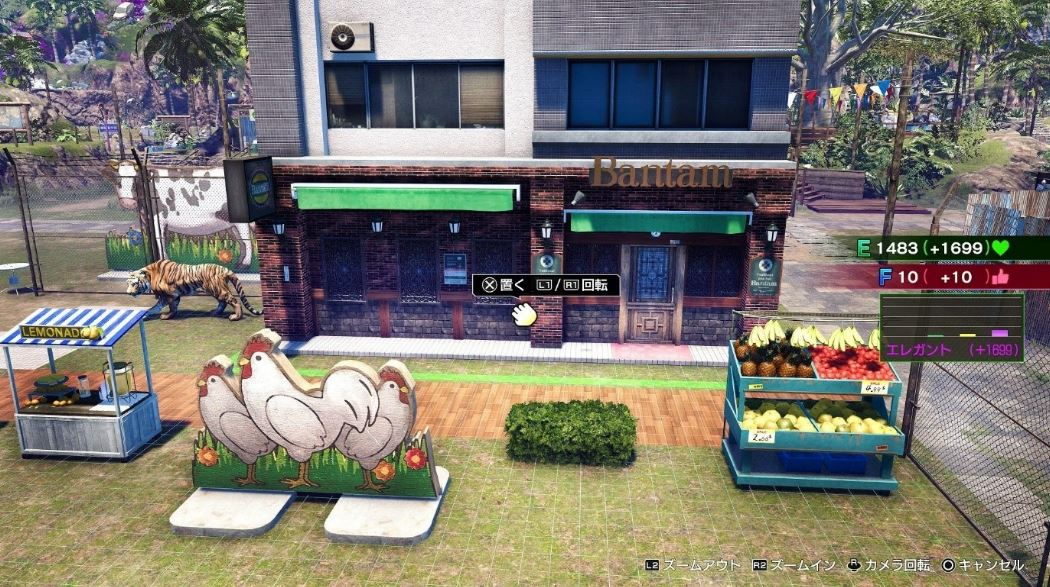
――Each object has its own parameters such as Satisfaction and Genre, and there’s so many types, what did you do about the ones that were missing a backside? Don’t tell me you had to fix them manually one by one…?
Hatoyama:
That’s exactly what we did (laughs). We also made them bigger or smaller, or took the assets that were too difficult to make off the list, changed their priority… It was really hard work.
――So you didn’t use each and every asset, but made a selection?
Hatoyama:
Yes. But there were still a lot of them, and we had to make a lot of individual adjustments.
――What was the most difficult object to put on Dondoko Island?
Hatoyama:
More than the objects, I had a hard time adjusting the terrain so that it was flat enough to place furniture but still reminiscent of natural island-like topography. After all, you can place basic objects anywhere as long as it’s within range. At first, Dondoko Island was a little smaller, but it kind of grew larger before we knew it, as we thought it would be more interesting if one could place many objects.
――As a player, I had a blast placing so much furniture all over the place. Thank you for your time!
Stay tuned for Part Two of this interview! (In the meantime, you can check out our interview about the Like a Dragon series’ character design.)
Like a Dragon: Infinite Wealth is available for the PC (Steam), PS4/PS5 and Xbox One/Xbox Series X|S. In the next part of this interview, we find out more about the production of backgrounds for Hawaii, the series’ first overseas setting.
[Interviewer, editor: Ayuo Kawase]
[Writer, editor: Yuuki Inoue]
[Translator: Mateja Matić]




